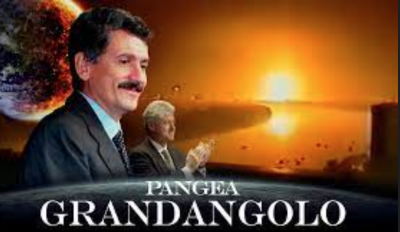Yugoslavia March 24, 1999 The Founding War of the New Nato

Twenty-five years ago NATO under U.S. command demolished through war what remained of the Yugoslav Federation, the State that stood in the way of its eastward expansion toward Russia. Over the next two decades NATO expanded from 16 to 30 countries and, with the war in Ukraine that began in 2014, expanded to 32. Decisive in the 1999 war is the role of the Italian government, headed by Massimo D’Alema and Vice President Sergio Mattarella (the current Peresident of the Repubblic). As we can hear from the official audio recording, it was Vice President Mattarella who announced to the Senate the start of the war on the evening of March 24, 1999 and explained the reasons for it according to the official version.
As planes from the United States and other NATO countries drop the first bombs on Serbia and Kosovo, Democratic President Clinton announces, “At the end of the 20th century, after two world wars and a cold war, we and our Allies have a chance to leave our children a free, peaceful and stable Europe.” For 78 days, taking off mainly from Italian bases, 1100 planes carried out 38,000 sorties, dropping 23,000 bombs and missiles. “Of the 2,000 targets hit in Serbia by NATO aircraft,” the Pentagon later documents, “1999 were selected by U.S. intelligence and only one by Europeans.”.
The bombing dismantles Serbia’s facilities and infrastructure, causing casualties mainly among civilians. The resulting damage to health and the environment is inquantifiable. From the Pancevo refinery alone, thousands of tons of highly toxic chemicals (including dioxin and mercury) escape from the bombing. Other damage is caused by NATO’s massive use of depleted uranium shells in Serbia and Kosovo.
The D’Alema government puts Italian territory, particularly airports, at the complete disposal of the armed forces of the United States and other countries to implement what the Prime Minister calls “the right of humanitarian interference.” Fifty-four Italian planes take part in the bombing, making 1,400 sorties, attacking targets specified by the U.S. command. “For number of planes we were second only to the US. Italy is a great country and we should not be surprised by the commitment shown in this war,” says Prime Minister D’Alema during a visit made June 10, 1999, to the Amendola base, stressing that, for the pilots who participated, it was a great human and professional experience.”
Article in italien :
Jugoslavia 24 Marzo 1999 La Guerra Fondante della nuova NATO
VIDEO in italian :

